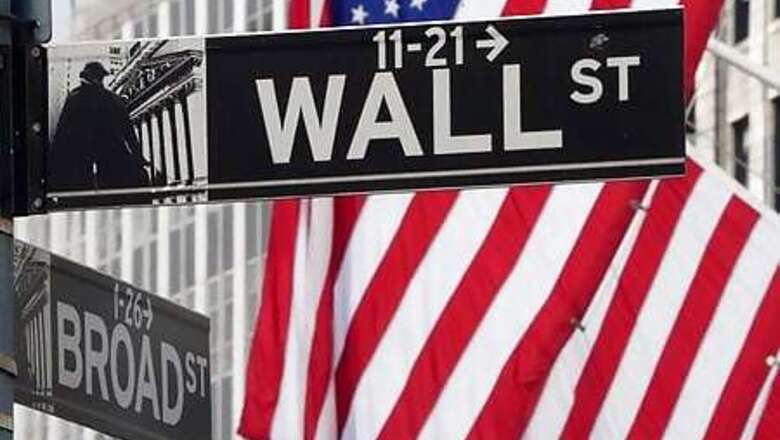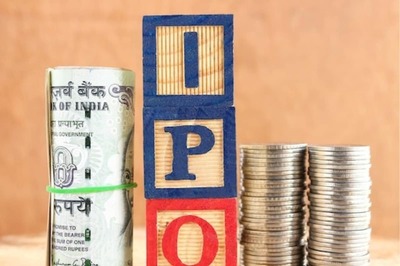
views
NEW YORK Has Wall Street missed the news that we are in a pandemic?
The U.S. economy remains battered by the coronavirus outbreak and Congress is deadlocked on another stimulus bill – yet the U.S. stock market just hit a new record intraday high.
While it may seem like investors have failed to factor in any of the bad news weighing on most U.S. households, there are several key reasons why the stock market has recovered and could continue to rally higher.
“Main Street lives for today, whereas Wall Street focuses on tomorrow,” said Sam Stovall, chief investment strategist at CFRA. “There’s been a massive amount of monetary and fiscal stimulus … and there’s a rising confidence that pharmaceutical firms are getting closer to a vaccine.”
A finish for the S&P 500 above 3,386.15 – its record closing high from Feb. 19 – would confirm the end of the shortest bear market in history.
Don’t fight the Fed https://fingfx.thomsonreuters.com/gfx/mkt/oakpemwabpr/Pasted%20image%201597154694695.png
The Federal Reserve kick-started the rebound into risk assets by pledging $3 trillion in unprecedented monetary support, going so far as to buy corporate bonds. That led to many investors repeating the mantra: “Don’t fight the Fed,” as they swooped in to follow the central bank’s lead.
Fiscal aid from U.S. lawmakers helped the Fed’s recovery efforts and further encouraged investors, as has the ability of many companies to beat expectations with their second-quarter earnings.
At the same time, bets that the Fed will keep rates at rock-bottom levels and stimulus flowing for the foreseeable future have pushed yields on some government bonds to record lows, driving money into equities.
“There’s a lot of money sloshing around in the system and a lot of it is finding a home in stocks,” said Jeff Buchbinder, equity strategist for LPL Financial.
The real deal https://fingfx.thomsonreuters.com/gfx/mkt/yxmpjrdlbpr/Pasted%20image%201597153304210.png
While U.S. growth took its worst hit since the Great Depression in the second quarter from coronavirus-fueled lockdowns, some market participants have been factoring in a comparatively speedy recovery, as seen in a jump in Citigroup’s Economic Surprise Index .
Taken by surprise https://fingfx.thomsonreuters.com/gfx/mkt/jznpnkabovl/Pasted%20image%201597151331825.png
RALLY OR RISK AHEAD?
After the sharp rally, investors are considering looming risks such as the upcoming U.S. presidential election, with some concerned that a contested result will create volatility across markets.
Valuations remain a concern. The S&P 500 trades at 24.5 times forward earnings, a level last seen during the dot-com bubble two decades ago. Some worry there is still too much uncertainty over the trajectory of the pandemic and its impact on growth to justify those valuations.
Back to the past https://fingfx.thomsonreuters.com/gfx/mkt/dgkpldyxapb/Pasted%20image%201597153650232.png
“Much of the possible good news is already priced in to markets, and valuations are starting to look stretched,” wrote Bob Doll, senior portfolio manager at Nuveen.
Meanwhile, investors crowding in a cluster of technology and internet stocks that have come to dominate the S&P 500 have heightened concerns that the index may be vulnerable to sharp reversals if holders decide to sell all at once.
Just five stocks – Microsoft Corp , Apple Inc , Amazon.com Inc , Google parent Alphabet Inc and Facebook Inc – account for more than 22% of the market cap of the entire S&P 500 index. Last month, 74% of fund managers in a BofA Global Research survey said holding tech stocks is the market’s “most crowded trade.”
The outsized rally has helped turn some previously bearish fund managers more bullish, with fund managers such as Guggenheim’s Scott Minerd now predicting that stocks will continue to rise after the Nov. 3 presidential election, regardless of the winner.
DoubleLine’s Jeffrey Gundlach is among the few well-known managers who have remained bearish, telling Reuters in late July that the equity rally led by a handful of large tech firms is “classic bear market rally activity.”
More optimistic investors argue that tech-related stocks pull their share of the index’s weight. While technology and communications stocks make up about 40% of the S&P 500’s market capitalization, they also account for a similar share of its earnings.
Fair share https://graphics.reuters.com/USA-STOCKS/HIGH/gjnvwxdydpw/chart.png
Tech stocks look increasingly attractive given historically low yields in the bond market that limit possible future returns, said LPL Financial’s Buchbinder.
While the scorching rally in tech sector stocks seen in the second quarter has eased somewhat this quarter, the tech sector continues to outperform the broad market.
“The gap between the winners and losers is widening and the strong are getting stronger,” he said.
Disclaimer: This post has been auto-published from an agency feed without any modifications to the text and has not been reviewed by an editor




















Comments
0 comment